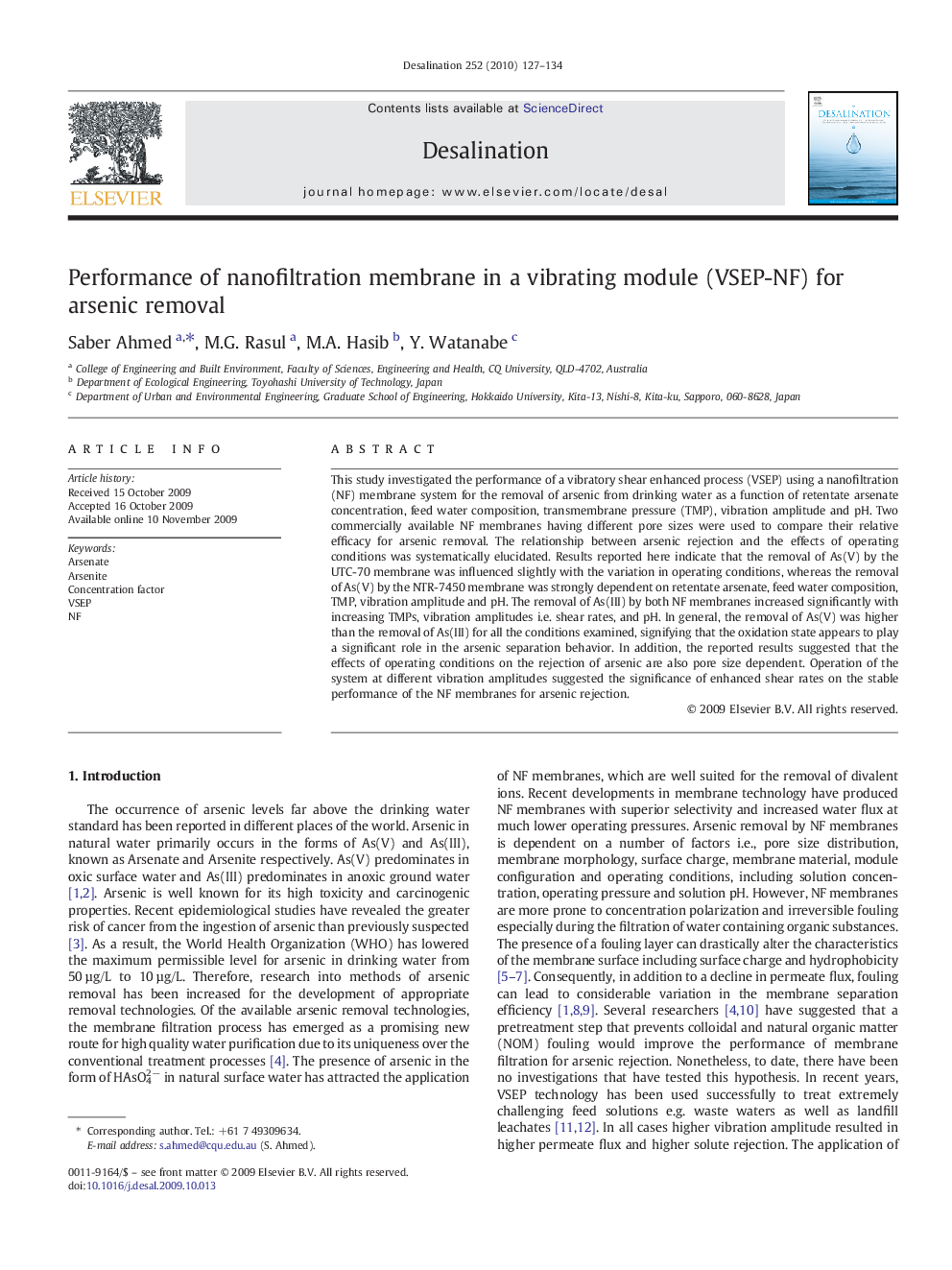| Article ID | Journal | Published Year | Pages | File Type |
|---|---|---|---|---|
| 625956 | Desalination | 2010 | 8 Pages |
This study investigated the performance of a vibratory shear enhanced process (VSEP) using a nanofiltration (NF) membrane system for the removal of arsenic from drinking water as a function of retentate arsenate concentration, feed water composition, transmembrane pressure (TMP), vibration amplitude and pH. Two commercially available NF membranes having different pore sizes were used to compare their relative efficacy for arsenic removal. The relationship between arsenic rejection and the effects of operating conditions was systematically elucidated. Results reported here indicate that the removal of As(V) by the UTC-70 membrane was influenced slightly with the variation in operating conditions, whereas the removal of As(V) by the NTR-7450 membrane was strongly dependent on retentate arsenate, feed water composition, TMP, vibration amplitude and pH. The removal of As(III) by both NF membranes increased significantly with increasing TMPs, vibration amplitudes i.e. shear rates, and pH. In general, the removal of As(V) was higher than the removal of As(III) for all the conditions examined, signifying that the oxidation state appears to play a significant role in the arsenic separation behavior. In addition, the reported results suggested that the effects of operating conditions on the rejection of arsenic are also pore size dependent. Operation of the system at different vibration amplitudes suggested the significance of enhanced shear rates on the stable performance of the NF membranes for arsenic rejection.
